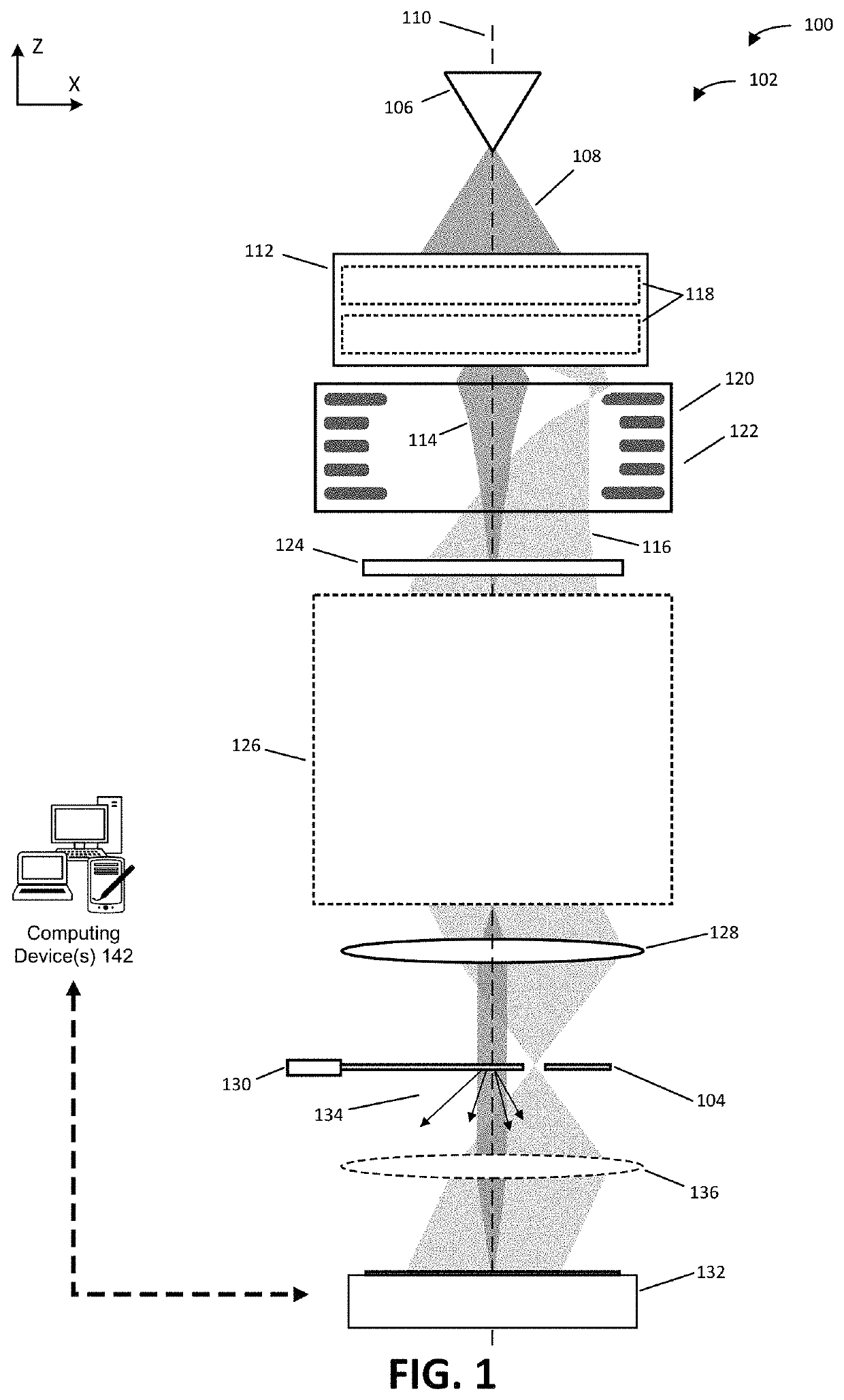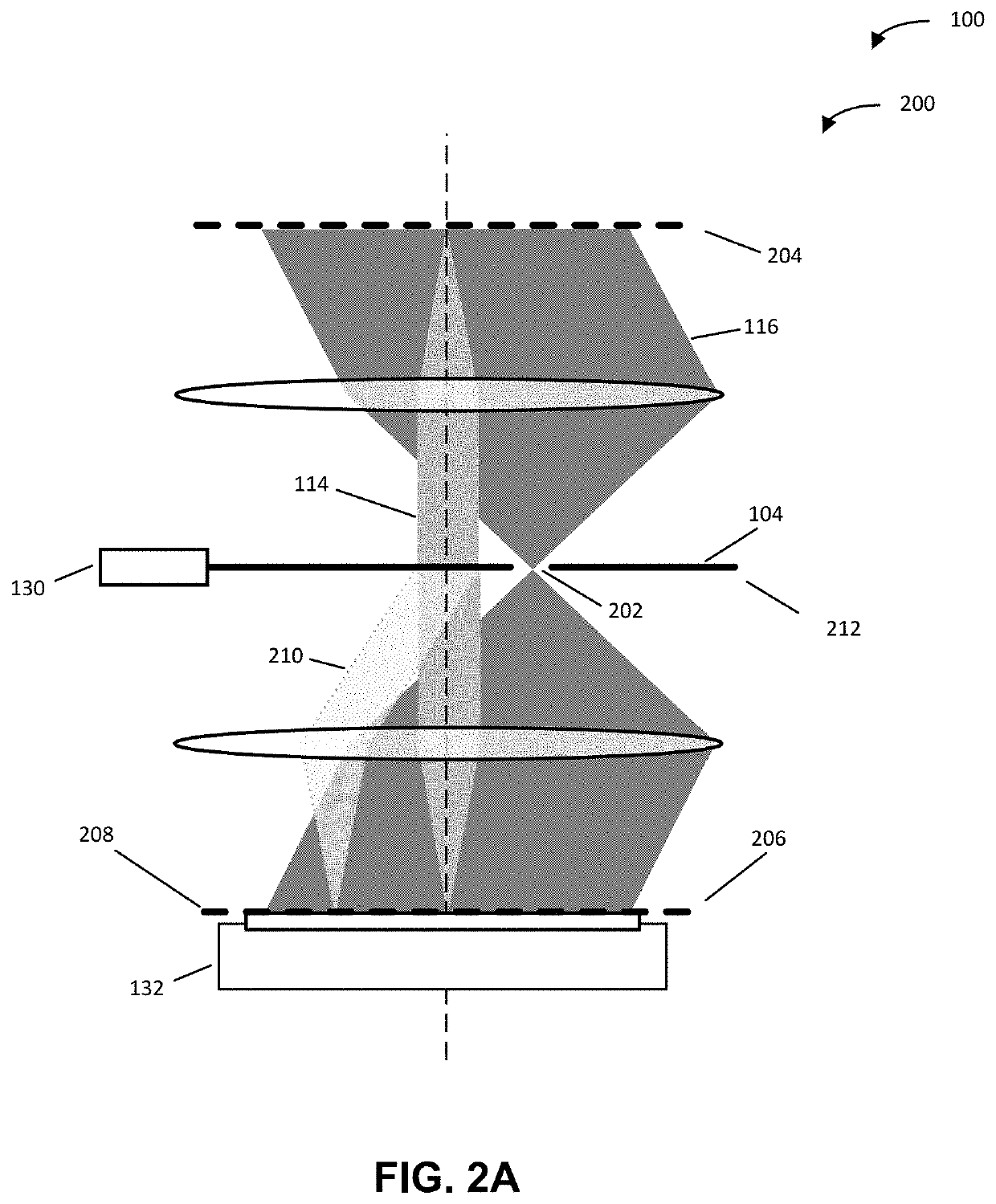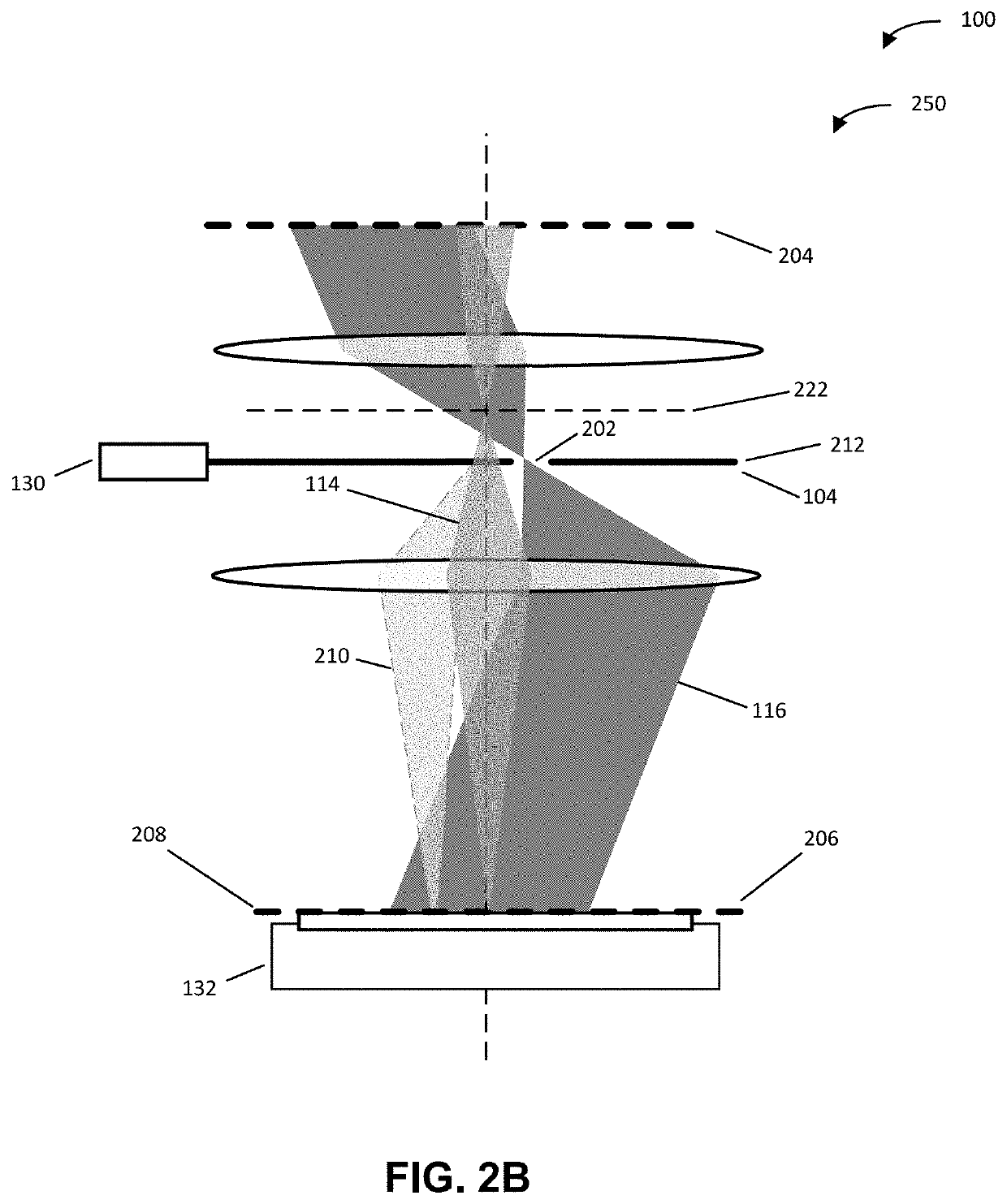Electron diffraction holography
a holographic and electron diffraction technology, applied in the field of electron diffraction holography, can solve the problems of inability to achieve the full exit wave, the phasing method as used in x-ray crystallography (anomalous dispersion, isomorphous replacement) is not well applicable to electron crystallography, and the current transition electron microscopy (tem) system operating in electron diffraction mode struggles to obtain the full exit wav
- Summary
- Abstract
- Description
- Claims
- Application Information
AI Technical Summary
Benefits of technology
Problems solved by technology
Method used
Image
Examples
Embodiment Construction
[0024]Methods and systems for performing electron diffraction holography, are included herein. More specifically, the methods and systems disclosed herein include and / or are configured to allow for diffraction holograms of a sample to be generated from interference patterns between an in-focus electron beam and a wide reference electron beam that are detected in the diffraction plane. In the methods and systems, a plurality of electrons that have been emitted by an electron source are split into a coherent first and second electron beam, and the focal properties of at least one of the first electron beam and the second electron beam are modified such that corresponding focal planes of the first electron beam and the second electron beam are different. In some embodiments, the focal plane of at least one of the first electron beam and the second electron beam is modified such that the first electron beam is focused at a plane at or near the sample, and the second electron beam is mad...
PUM
| Property | Measurement | Unit |
|---|---|---|
| radius RE1 | aaaaa | aaaaa |
| radius RE1 | aaaaa | aaaaa |
| voltages | aaaaa | aaaaa |
Abstract
Description
Claims
Application Information
 Login to View More
Login to View More - R&D
- Intellectual Property
- Life Sciences
- Materials
- Tech Scout
- Unparalleled Data Quality
- Higher Quality Content
- 60% Fewer Hallucinations
Browse by: Latest US Patents, China's latest patents, Technical Efficacy Thesaurus, Application Domain, Technology Topic, Popular Technical Reports.
© 2025 PatSnap. All rights reserved.Legal|Privacy policy|Modern Slavery Act Transparency Statement|Sitemap|About US| Contact US: help@patsnap.com



